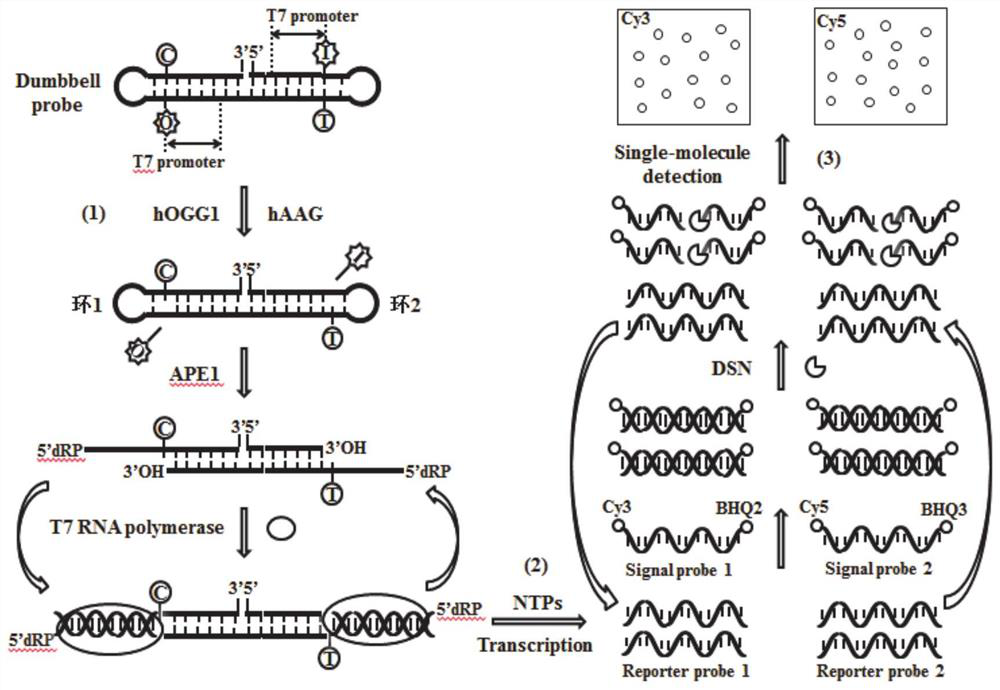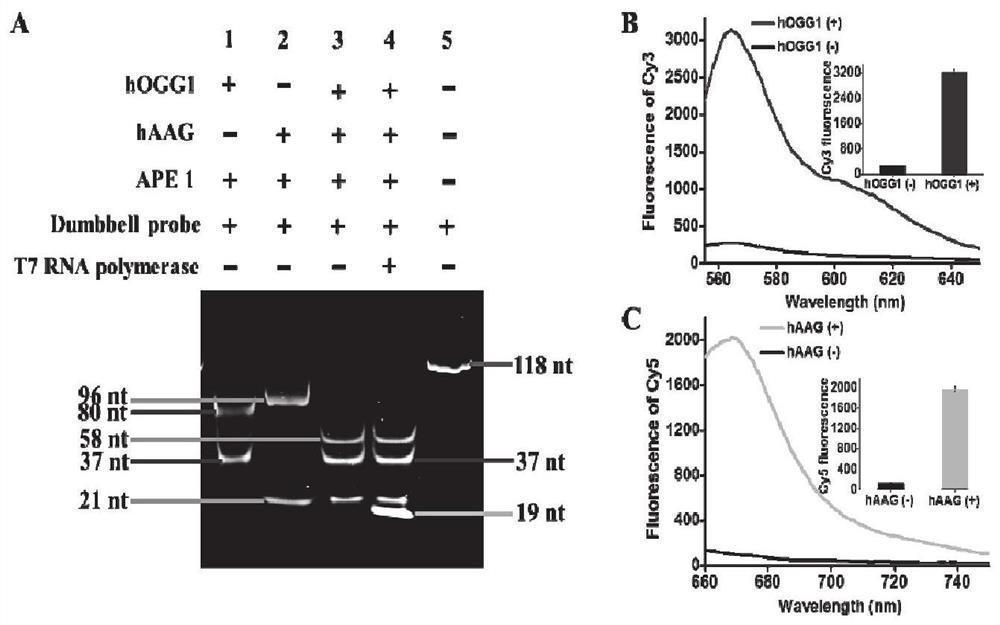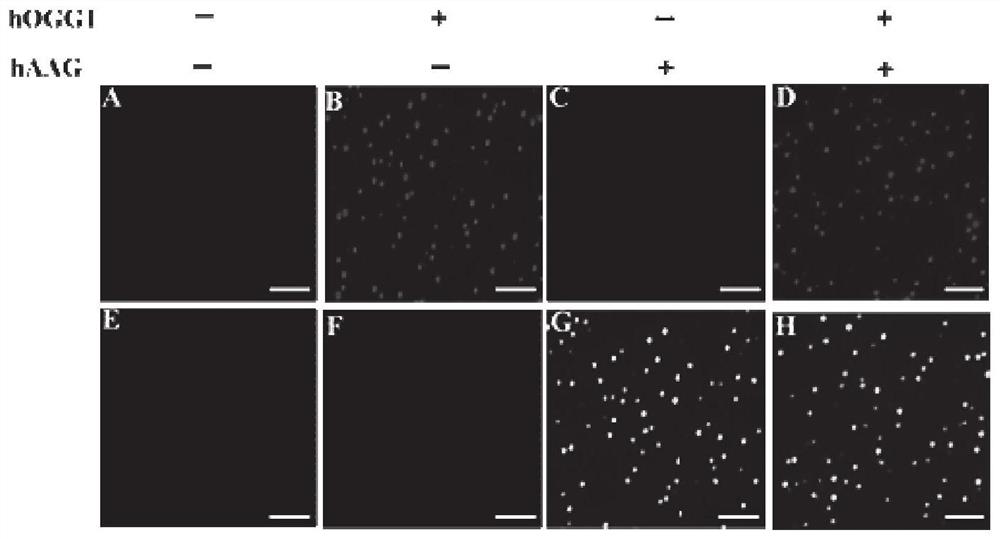Fluorescence sensor for simultaneously detecting hOGG1 and hAAG and detection method and application of fluorescence sensor
A fluorescent sensor and detection method technology, applied in the field of biological analysis, can solve the problems affecting the quantification and reproducibility of the target, time-consuming operation, underestimation, etc.
- Summary
- Abstract
- Description
- Claims
- Application Information
AI Technical Summary
Problems solved by technology
Method used
Image
Examples
Embodiment 1
[0059] A detection method for simultaneously detecting hOGG1 and hAAG:
[0060] Repair of activated T7 transcription-dependent cyclic amplification cascade: All synthesized oligonucleotides were dissolved in 1x Tris-EDTA buffer (10 mM Tris, 1 mM EDTA, pH 8.0) to prepare stock solutions. Hybridization buffer (1.5mM MgCl 2 , 10mM Tris-HCl, pH 8.0) to dilute the dumbbell probe to 10μM, incubate at 95°C for 5 minutes, and then slowly cool to room temperature within 30 minutes to allow it to fold into the ideal hairpin structure. Then add 1 μL dumbbell probe to a 20 μL excision reaction system containing different concentrations of hOGG1 and hAAG, 10 U APE1, 2 μL 10×NEBuffer 2, 2 μL 10× ThermoPol reaction buffer, and 2 μL 10× NEBuffer 4, and incubate at 37 °C 30 minutes for base excision repair.
[0061] Subsequently, 10 μL of the excised product was added to a 10 μL amplification reaction system containing 40 μM NTP, 30 U T7 RNA polymerase, 20 U RNase inhibitor, and 2 μL 10×RNAP...
PUM
 Login to View More
Login to View More Abstract
Description
Claims
Application Information
 Login to View More
Login to View More - R&D
- Intellectual Property
- Life Sciences
- Materials
- Tech Scout
- Unparalleled Data Quality
- Higher Quality Content
- 60% Fewer Hallucinations
Browse by: Latest US Patents, China's latest patents, Technical Efficacy Thesaurus, Application Domain, Technology Topic, Popular Technical Reports.
© 2025 PatSnap. All rights reserved.Legal|Privacy policy|Modern Slavery Act Transparency Statement|Sitemap|About US| Contact US: help@patsnap.com



